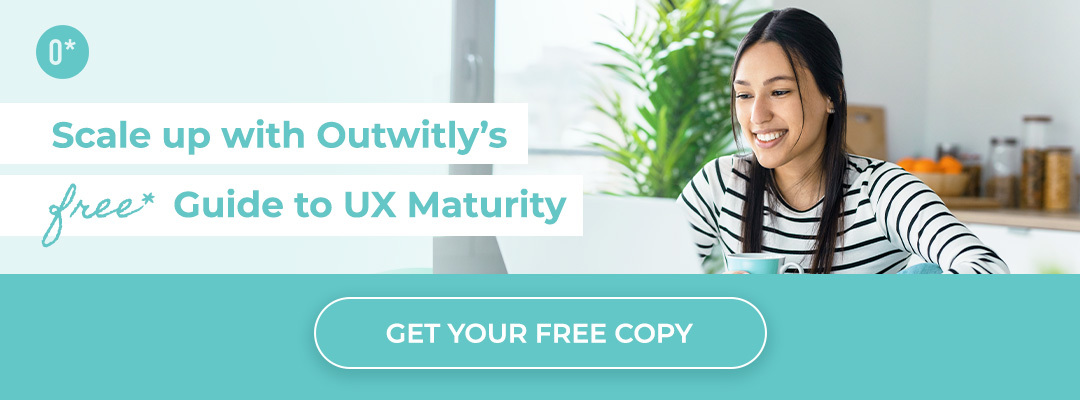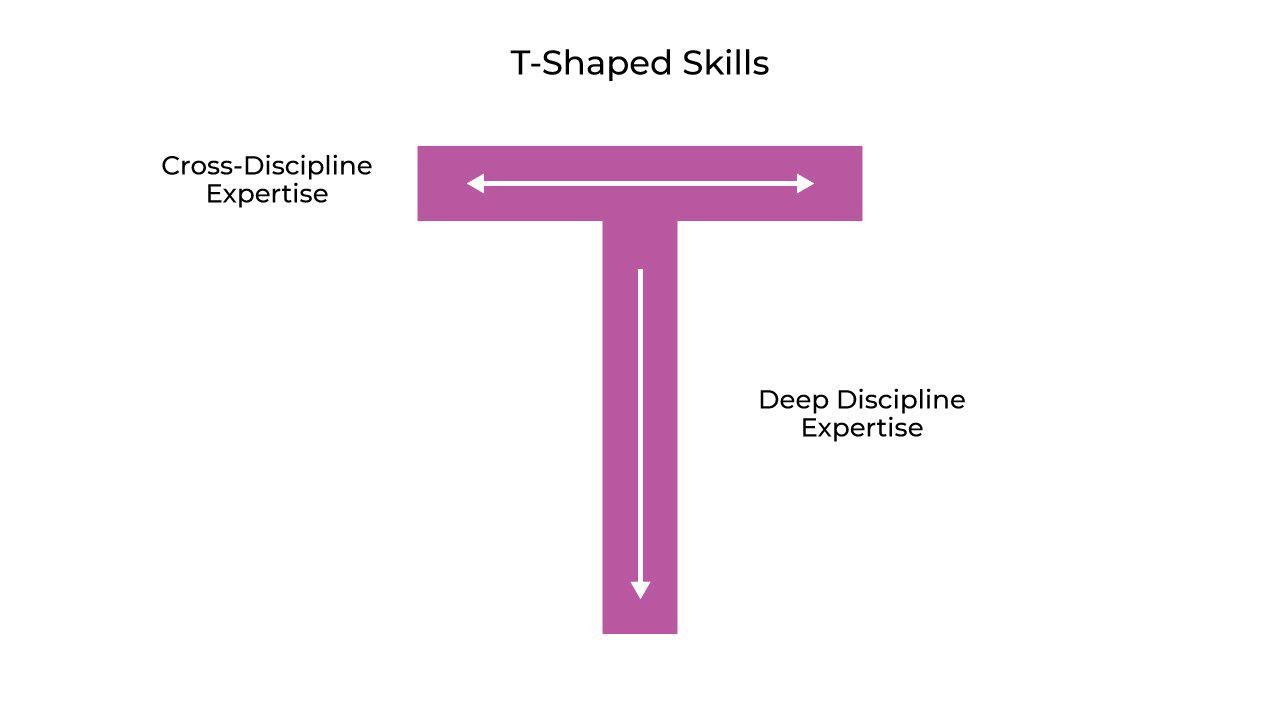
There is no doubt that companies who invest in creating better user experiences for their digital products and services are seeing increased revenue, customer satisfaction, and retention. If you’ve stumbled across this post, it’s likely because your team understands this, however, you might have hit some roadblocks when it comes to actually hiring the right UX designers and researchers for your team.
If you’ve decided to invest in building your in-house UX design and research team, but you’re struggling to either find the right people and successfully hire them, or you’ve hired a team and for some reason they just aren’t getting the job done, then you might be running into some of the most common pitfalls we see when non-UX experts try to recruit and hire UX designers, UI designers, UX researchers, and design researchers. If this is you, don’t worry! You aren’t alone. The UX industry is highly competitive at the moment and there are a lot of online certificates varying in quality, resume padding, and fluff that makes it very difficult for recruiters and hiring managers to sift through. This blog post will help you get started with your UX hiring process and let you in on the most common pitfalls to avoid.
Today’s post will cover:
-
Signs you might be struggling with the UX hiring process
-
Where to start when hiring in UX
-
What is a UX Unicorn or a T-Shaped designer
Three tell-tale signs that your UX hiring process is struggling
If you’ve already started down the path of hiring your first UX team, but still feel like there is something just isn’t right, it might be time to take another look. Here are a few signs that your hiring or recruiting process needs help.
-
You aren’t seeing the results you were looking for when it comes to enhanced usability and ease-of-use of your product. You may have hired too junior, a web designer instead of a UX designer, or someone who has stronger skills in UI design (which focuses more on look & feel!) This is why it’s so important to understand the difference between UX and UI design before you start hiring. Make sure you’re hiring the right professional for the job you need done!
-
Your UX design team is drowning in feature requests and unable to focus on the big picture. If this is happening, you may need to look at your UX team governance. Without a UX lead or manager it can be hard for mid-level or junior designers and researchers to properly advocate for a better user experience and design process. You need someone who has equal influence to the product manager or engineering director who can push back on feature stuffing, look at the big picture, and prioritize/champion the user experience. Trust us, you’ll get a lot more done this way!
-
You have a general lack of direction, UX strategy, and process. You have wasted time in countless design and development cycles and are making lots of design iterations and new versions –which is costing you money! If you’re struggling with this roadblock, you might also be feeling like there is too much back and forth, team frustration, and constant feature re-designs. What you need is a streamlined product development process and a holistic product vision. If this is happening to your team, it might be because you haven’t hired a designer who has a strong understanding of product development, software engineering, or agile methodologies. Ideally you have a UX designer who is equally skilled in UX strategy and product strategy to smooth out some of these inefficiencies.
UX Maturity and the hiring process
First, let’s back up a step. Your UX hiring journey will depend largely on your organization’s UX Maturity Level! If you don’t know where you land on the UX Maturity Scale, that’s okay – we’ve got you covered with our free downloadable that will help you determine exactly where you’re at.
Level 1’s in the UX hiring process are still learning about the differences between UX roles (think: UX Designer, UI Designer, Service Design, etc.) You might be ready to introduce UX design into your organization, but it’s important to get everyone on the same page with the importance of hiring into this role. Resources dedicated to UX may be minimal, but we’d majorly recommend outsourcing to the pros to ensure you get started correctly. Remember: hiring a junior designer into your first UX role is not the right move!
If you’ve experienced some or most of the struggles we previously listed in this blog post, you’re likely occupying Level 2 or Level 3 of the UX Maturity Scale. Here’s why:
-
You’ve fully bought into the idea that you need to hire into UX design.
-
Maybe you already have a person on your team who you’re calling a UX designer, but when you break down their role, they’re actually more of a user interface or web designer.
-
You are ready to invest and hire your team’s first UX superstar.
If you have a senior UX’er on your team who needs more support in order to make bigger strides for your organization’s UX, you’re likely a Level 4 or 5 on the UX Maturity Scale. If you already have a senior designer, who should you be looking for now in your UX hiring process? We’d suggest focusing on building out a well rounded team so everyone can fulfill their roles as they were intended. Start recruiting researchers, copywriters, more UX designers, UI designers, front end designers, and developers! Invest in a UX Director or promote from within.
Four skills to look for when hiring your first UX designers
This section is for our level 1’s through 3’s on the UX Maturity Scale. You’re ready to start hiring/improve your hiring practices to build your first UX team and you’re inevitably running into some of the challenges we’ve mentioned above. Here is our take on the best skills/qualifications to look for in your first UX design and research hires so you can get the ball rolling and avoid as many obstacles as possible.
For your first UX hire, look for someone with:
-
A minimum of 5 years of industry experience working for other organizations.
-
Strong communication skills who can champion the value of design and research.
-
A solid understanding of UX best practices.
-
Experience conducting user research so they understand and can execute the end-to-end design process.
-
Confidence to push back when needed! So they won’t be bulldozed by engineering or product teams.
Avoid the junior-first trap. As tempting as it may seem to hire a junior resource who you can mold/shape as your first UX hire – this is a big no no! Bringing in a junior with minimal work experience and having them set the foundation of UX for your entire organization can lead to adopting poor design practices overtime. No matter how talented they are, if they don’t have the experience to back up their choices and the confidence to stand up to senior management your UX will suffer in the long run.
Look to the future! Hire someone with the intention that they’ll grow into a UX Manager or Director within a few years. They’ll understand your business so well that they’ll know exactly who they need to hire when it’s time to build out a full UX team. Start with a senior/lead person, get them in there first and when they get busy (which they will) they’ll need support! And that’s where a junior designer comes in, who can help on the production side and have a senior designer to mentor them and support them.
Look for a strong communicator with high emotional intelligence (EQ). The core of UX design is making things better. In other words…CHANGE. Revolutionizing your user experience requires changing the way you’ve been doing things for a long time. Sometimes it requires redesigning an entire product or service from scratch. This kind of change can involve a lot of opinions and ego. There are people who are going to resist the change, and you need someone strong enough in their convictions and communication skills to stand up for UX to really make the difference for your product or service.
Hire a T-Shaped Designer or better yet, a Unicorn. A T-Shaped designer (first coined by Tim Brown from IDEO) is someone who has deep knowledge and expertise in design and the design process, but they also have knowledge (just less deep) in other things like organizational change, engineering, and content strategy which are important to your business. T-shaped designers are also similar to the concept of UX unicorns. These are individuals who can truly do all of the facets of user experience well. That includes someone who can conduct user research, is a strong UX designer, and a good visual or UI designer. They are natural strategic thinkers who understand the product and business side as well as the user’s needs. These folks are ideal as first-time hires because they will quickly see the gaps in your user experience and be able to carry you through all the phases of the design process from discovery to concept design, to prototyping and testing, and through to final design and implementation. They also have a vision for how to improve internal business processes and the product development process. Moreover, they are great first-time hires because as your company grows and you bring on more members to your UX team, they will be able to identify individuals in all areas of the UX process (i.e. UI designers, UX researchers, UX designers, etc.).
These people are rare and should be highly valued. They can also easily become frustrated and bored if the organization doesn’t value them or give them room to improve the user experience and product development processes. So when you find someone like this, hold on to them, and give them the room to make changes and improve your product. You will thank yourself! But, be ready to invest in these designers/researchers, they understand their value.
Want a UX Unicorn? If you need support with your hiring process, get in touch with us today or drop us a line at info@outwitly.com
We hope you learned something today about the UX hiring process, and that you’ll be more aware of pitfalls to avoid as you tackle this major feat. Your products, services, customers, and users will benefit majorly from your investment into building your in-house UX design and research team. In our next blog post, we’ll be covering common UX recruiting challenges and tips for overcoming them. Make sure to subscribe to our newsletter so you don’t miss it!
Resources we like…
-
6 tips on hiring the right UX designer from Bootcamp
-
UX Beginner talks: I, X, and T-Shaped Designers: What’s the Difference?
-
Types of UX Providers and How to Choose Wisely by adamfard.com
Related posts…
-
Subscribe to our newsletter so you never miss out on a new blog!






